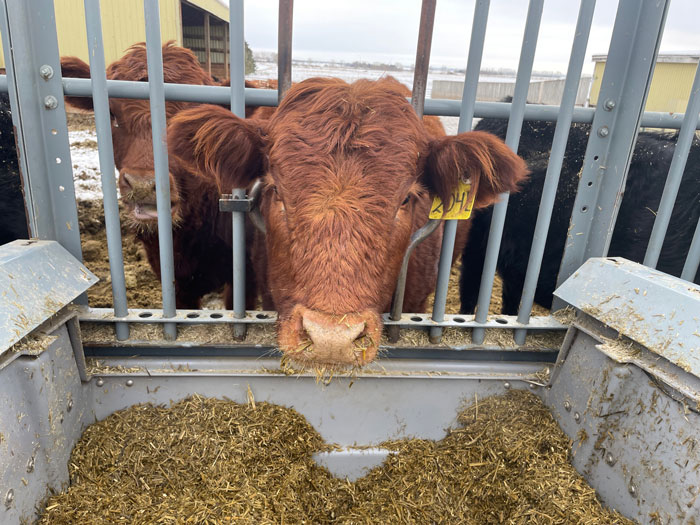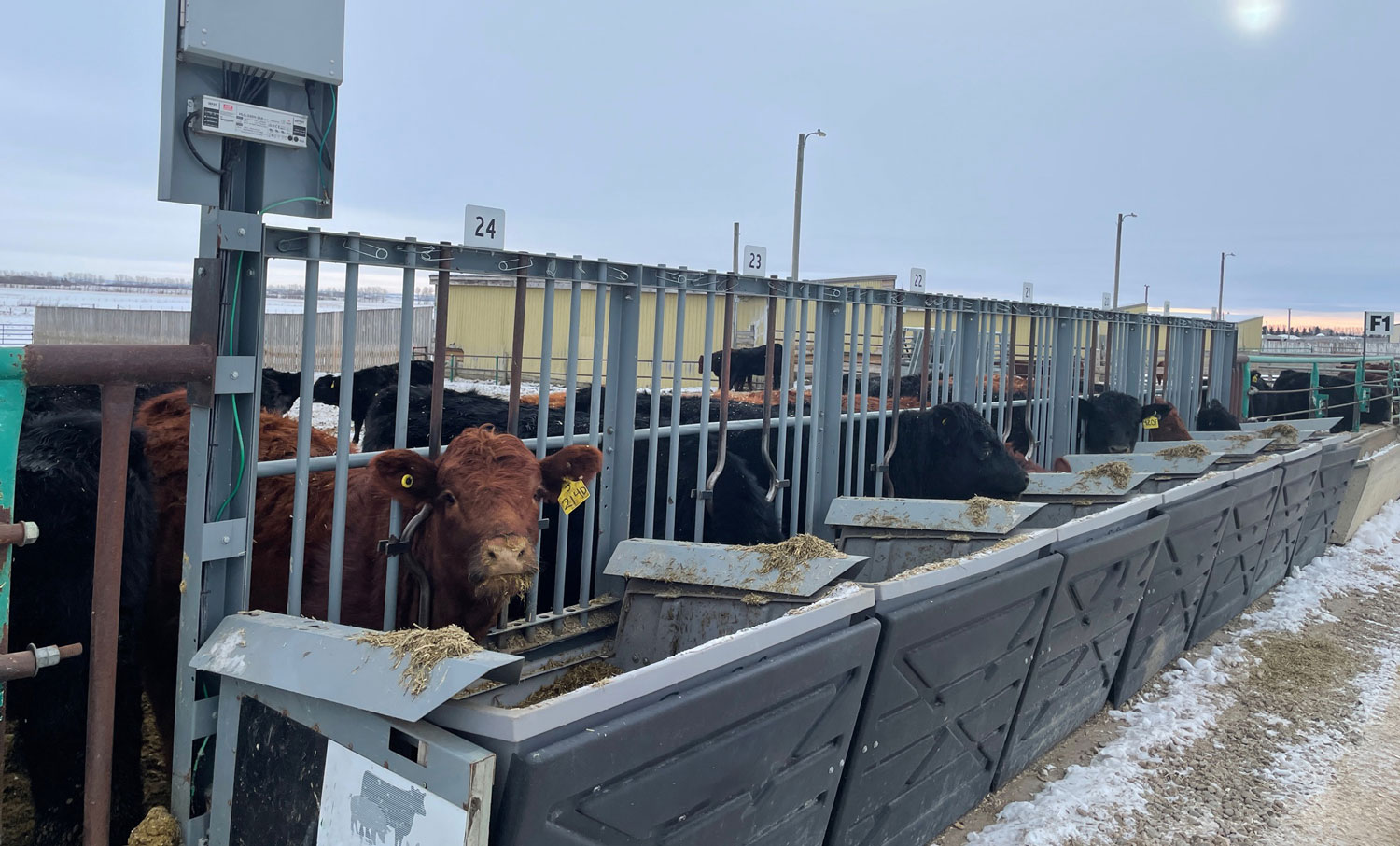Source: Olds College
In beef cattle production, feed costs constitute a substantial portion of expenses accounting for up to 70 per cent of the total operational costs. This can significantly impact a farmer’s bottom line. As feed costs fluctuate with grain prices, weather conditions and market demands, it affects the viability of individual farms and influences the industry’s overall sustainability. Consequently, improved feed efficiency has become a strategy for producers to optimize their operations.
Feed efficiency can be defined as the ability of cattle to convert feed into body weight gain. Improving feed efficiency can reduce feed costs while enhancing the profitability and sustainability of a farm operation. However, measuring and selecting for feed efficiency is not a simple task since different indicators and methods can be used to evaluate this complex trait.
One common indicator of feed efficiency has been feed conversion ratio (FCR), which is simply the ratio of feed intake to weight gain. However, FCR has some limitations as it does not account for the maintenance requirements of the animal, nor the differences in body composition and growth potential among animals. In fact, studies have shown that selecting animals using FCR results in larger mature weights over time.

A more accurate and comprehensive indicator of feed efficiency is residual feed intake (RFI), which is defined as the difference between actual feed intake and expected feed intake based on weight and growth rate. Animals with low (negative) RFI are more efficient as they consume less feed than expected for their level of production. RFI is independent of body size and growth rate, and can be used to select for feed efficiency without adversely affecting other production traits. Another indicator that combines RFI and residual average daily gain (RADG) is residual intake and body weight gain (RIG). RIG identifies cattle that consume less than expected and gain more weight than anticipated making it more suitable for beef selection. RFI and RIG calculations require feed intake monitoring and weight gain of individual animals over a period of time ranging from 49 to 91 day tests.
Selecting cattle based on RFI or RIG can have significant positive impacts on beef production systems. Studies have shown that selecting cattle for low RFI can reduce feed intake, improve feed efficiency (both RFI and FCR), reduce methane emissions and increase net income. Research assessing the relationship between RFI and carcass traits has been conflicting — some studies show reduced carcass fat and ribeye area in more efficient animals, but other studies show no significant effect. Similarly, results on reproductive performance associated with more efficient cattle are mixed; some studies found reduced pregnancy rates and others observed no differences between high and low RFI groups. Further research in these areas is needed to better understand the influence of selecting for improved feed efficiency.

The adoption rate of feed efficiency testing in beef cattle is low, likely due to a lack of access to facilities which can measure individual animal feed intake. One solution to the limited testing facilities is genomic testing. Genomic selection using DNA markers to predict the genetic merit of animals for feed efficiency has been extensively researched, and can increase the accuracy and reliability of estimated breeding values (EBVs) by capturing the effects of many genes that influence complex traits. Several research projects have identified DNA markers associated with feed efficiency traits in different beef cattle populations using high-density SNP chips or whole-genome sequencing. These markers have been used to develop genomic tests that can identify cattle with superior genetics for feed efficiency with relatively high accuracy. Genomic tests can reduce the cost and time of measuring feed intake, increase the number of animals evaluated, and enable early selection of young animals before they enter production.
The Technology Access Centre for Livestock Production (TACLP) at Olds College of Agriculture & Technology is a research and innovation hub that provides support and services to the livestock industry by offering access to state-of-the-art facilities, equipment, and expertise in areas such as animal health, nutrition, genetics, and welfare. The TACLP aims to improve animal health and welfare, increase production efficiency, and enhance environmental sustainability of livestock production in Canada and beyond. One of the services offered is feed efficiency testing for beef cattle and sheep on a fee-for-service basis.
Feed efficiency at the TACLP is assessed using the Vytelle SENSE (formerly GrowSafe) system, which includes feed bunks that monitor individual feed intake through sensitive scales and radio frequency identification (RFID) tag readers. Every time an animal visits a feed bunk, the scale precisely measures its intake and matches it to the respective animal via RFID tag recognition. Additionally, an in-pen weighing system which enables daily weight measuring could shorten the official testing period to 49 days. This would make the total testing period as short as 59 days considering a minimum of 10 days of adaptation to the system, environment and diet.









